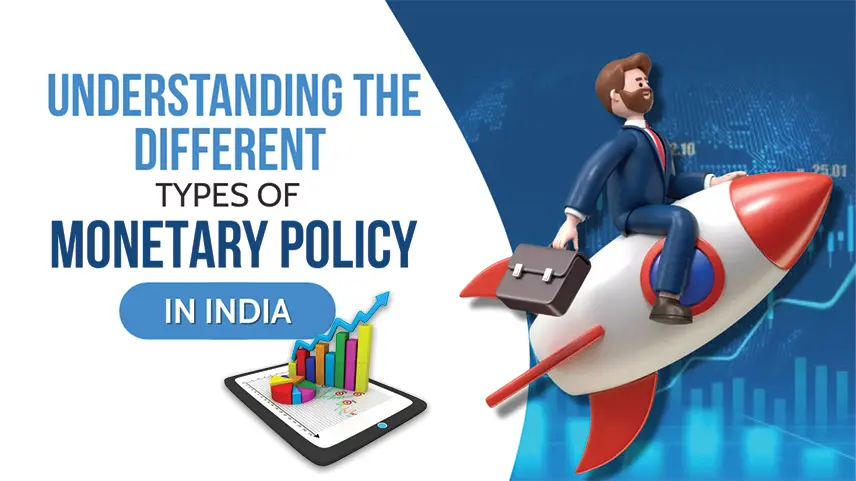Understanding the Different Types of Monetary Policy in India
Monetary policy refers to the actions taken by a country's central bank to manage the supply and demand of money in the economy. In India, there are several types of monetary policies that are used to achieve specific economic goals. Understanding these policies can help you make informed financial and investment decisions. In this guide, we'll explore India's different monetary policy types and how they impact the economy.

Monetary Policy
Monetary policy is an important tool used by the Reserve Bank of India (RBI) to manage the country's economy. It involves controlling the supply of money in the economy to achieve specific goals such as controlling inflation, promoting economic growth, and maintaining financial stability. The RBI uses various tools and techniques to implement monetary policy, including adjusting interest rates, regulating the money supply, and managing exchange rates. Understanding these policies is crucial for anyone interested in the Indian economy and financial markets.
Monetary Policy Types in India
There are two main types of monetary policy: expansionary and contractionary. Expansionary monetary policy involves increasing the money supply in the economy to stimulate economic growth and reduce unemployment. This can be achieved by lowering interest rates, increasing government spending, and reducing taxes. On the other hand, contractionary monetary policy involves reducing the money supply to control inflation and prevent the economy from overheating. This can be achieved by raising interest rates, reducing government spending, and increasing taxes. The RBI uses a combination of these policies to achieve its goals and maintain financial stability in the country.
Expansionary Monetary Policy
Expansionary monetary policy is a type of monetary policy that involves increasing the money supply in the economy to stimulate economic growth and reduce unemployment. This can be achieved by lowering interest rates, increasing government spending, and reducing taxes. Lowering interest rates makes borrowing more affordable, which stimulates businesses and individuals to invest and spend more. Increasing government spending and reducing taxes also puts more money into the economy, which can lead to increased consumer spending and business investment. Expansionary monetary policy is often used during times of economic recession or slow growth to boost the economy.
Contractionary Monetary Policy
Contractionary monetary policy is the opposite of expansionary monetary policy. It involves decreasing the money supply in the economy to slow down economic growth and control inflation. This can be achieved by increasing interest rates, decreasing government spending, and increasing taxes. Increasing interest rates makes borrowing more expensive, which discourages businesses and individuals from investing and spending. Decreasing government spending and increasing taxes also take money out of the economy, which can lead to decreased consumer spending and business investment. Contractionary monetary policy is often used during times of high inflation to control prices and prevent the economy from overheating.

0 comments